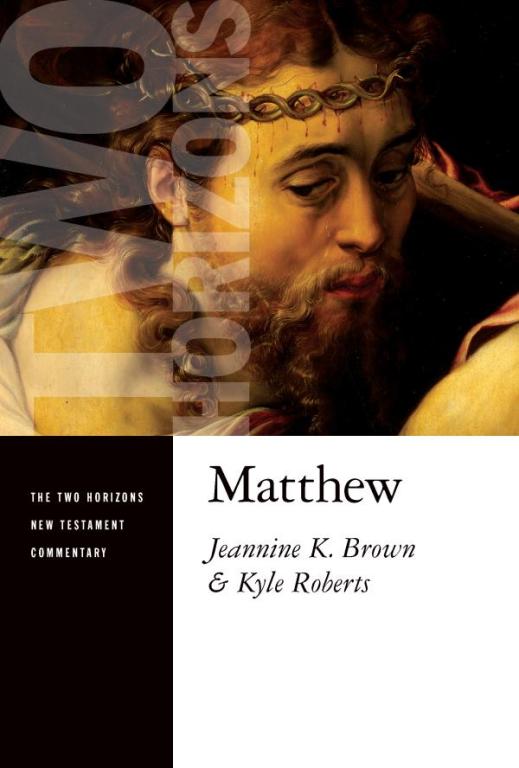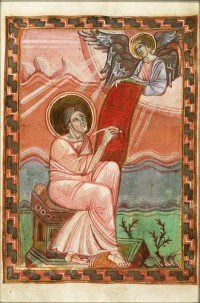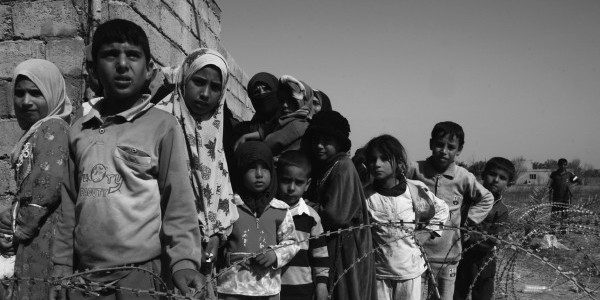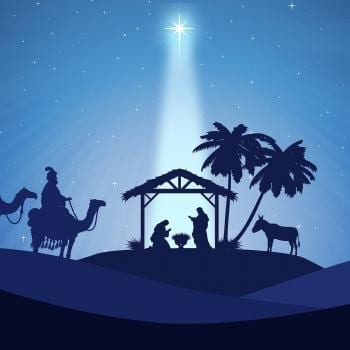A Southern Baptist professor and blogger recently asserted that “least of these” in Matthew 25 doesn’t refer to the poor, but Christian businesspeople (bakers, florists, etc.), who suffer for their discrimination against LGBTQ people.
Denny Burk points out that the “least of these,” in Matt. 25, is linguistically related to the “little ones” in Matt. 10:4042 and in Matt. 18 (vv. 6, 10, 14). The “little ones” in Matt. 10 and 18, Burk argues, refer to Jesus’ disciples. Therefore, the “least of these” in Matt. 25 must also mean Jesus’ disciples, rather than poor people in a more universal sense:
This text is not about poor people generally. It’s about Christians getting the door slammed in their face while sharing the gospel with a neighbor. It’s about the baker/florist/photographer who is being mistreated for bearing faithful witness to Christ. It’s about disciples of Jesus having their heads cut off by Islamic radicals. In other words, it’s about any disciple of Jesus who was ever mistreated in the name of Jesus. This text shows us that Jesus will judge those who show contempt for the gospel by mistreating gospel-bearers.
First off, the sentence “any disciple of Jesus who was ever mistreated in the name of Jesus,” could conceivably include any number of LGBTQ Christians who are persecuted by fundamentalist, homophobic Christians.
But second, it is true that the equation of the “least of these”with disciples of Jesus is a fairly common reading of the text. Scot McKnight takes that interpretation, for example, in his recent book Kingdom Conspiracy. The most immediate problem here, though, is Burk’s comparison of door-to-door confrontational evangelism and homophobic Christian businesspeople with actual martyred Christians. In any case, let’s acknowledge that “least of these” = Christian disciples is a major interpretive option in commentaries and such (biblical studies). I would say that in theology generally, though, it’s a minority option. In any case, it’s certainly not the only major perspective on offer.
most immediate problem here, though, is Burk’s comparison of door-to-door confrontational evangelism and homophobic Christian businesspeople with actual martyred Christians. In any case, let’s acknowledge that “least of these” = Christian disciples is a major interpretive option in commentaries and such (biblical studies). I would say that in theology generally, though, it’s a minority option. In any case, it’s certainly not the only major perspective on offer.
In broad outline, the two major options are (1) the “least of these”=Christian disciples, and (2) the “least of these”=poor, hungry, thirsty, imprisoned, vulnerable, oppressed, anywhere and everywhere.
In a recently published essay, New Testament scholar Jeannine Brown compares what she calls the “particularist” reading [or, the “least of these”=Christian disciples] with the “universalist” reading [1]. The universalist reading takes the “least of these” to refer to the world’s poor, outcast, downtrodden–regardless of any belief in or devotion to Jesus. The universal reading does not limit the reference to followers of Jesus, preachers and missionaries of the gospel (which some particularists see as indicated by Jesus’ phrase, “my brothers and sisters”). Brown points out, though, that even some particularists note that Matthew 25 does blur boundaries, upends expectations of who is in and who is out, who is righteous and who is not, who is on Jesus’ side and who isn’t.. Matthew 25 is an “explosive text,” as Ulrich Luz notes–one which upends our expectations of judgment.
She offers Dan Via’s interpretation as an example. Via notes the surprise that the “sheep” (those Jesus calls “righteous”) express when they discover that their service to the “least of these” is equated with service to Jesus [2]. Because Jesus’ disciples were closely and publicly identified with Jesus himself, the righteous would not have been surprised when Jesus identified himself with them. The whole “element of surprise” makes no sense in the narrative, if the “least” are understood to be Jesus’ disciples (preachers, missionaries, and–for Burke–conservative Christian bakers and florists, etc.). Had they known that the hungry and thirsty people they were serving were Jesus’ disciples (e.g. preachers and missionaries), they would have connected them to Jesus already. As Via says, “to have encountered a disciple is to know that person as a disciple of Jesus.” Their surprise means that at least some of the “least of these” were not Christians, or disciples of Jesus as such, but were simply poor, needy, suffering people.
Brown argues that the boundaries are blurred even further, by showing that the “least” in Mathew has to do with 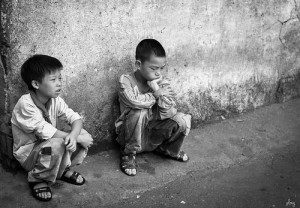 status, and is related to Matthew’s previous use of “little ones” (chp. 10, 18). But instead of reading these terms as relating to disciples [generally], they refer [more specifically] to “persons of low status” [3]. These are people who are marginalized, oppressed, outcast, left out, and vulnerable. These are the people that Jesus’ disciples are supposed to pay special attention to. Unfortunately, they often forget their calling, as they did in Matt. 18, when they were peppering Jesus with questions about who would be first when his kingdom arrived. They were concerned about their high status, and forgot about those of low status who were really suffering around them. So Jesus brought a child in before them. This was an “object lesson,” Brown says, about status: “Welcoming children, those of low status, is then tied to welcoming Jesus himself.”
status, and is related to Matthew’s previous use of “little ones” (chp. 10, 18). But instead of reading these terms as relating to disciples [generally], they refer [more specifically] to “persons of low status” [3]. These are people who are marginalized, oppressed, outcast, left out, and vulnerable. These are the people that Jesus’ disciples are supposed to pay special attention to. Unfortunately, they often forget their calling, as they did in Matt. 18, when they were peppering Jesus with questions about who would be first when his kingdom arrived. They were concerned about their high status, and forgot about those of low status who were really suffering around them. So Jesus brought a child in before them. This was an “object lesson,” Brown says, about status: “Welcoming children, those of low status, is then tied to welcoming Jesus himself.”
In Matthew 25, Jesus makes an important point about his authority. Authority belongs to Jesus–and the only way for his disciples to “access” that authority is through the presence of Jesus among them. But then, Brown suggests,
The unexpected comes when Jesus defines their response to a Jesus who was hungry, thirsty, a stranger, naked, sick, and imprisoned. This is a different Jesus than the one who uses his authority to heal sickness, to feed the hungry, to welcome the stranger. Or so it would seem. Clarification comes when, in response to the similar question from both groups, Jesus specifices, “whatever you did for the least of these…you did for me (25:40)… Jesus himself redistributes power in the scene. The authoritative Jesus is shown to side with the “least,” a group that (by definition) lacks status and power. Thus, just as Jesus has shared the disadvantages and marginalization of the least with them (he was hungry, sick, and poor), so the least now aligned with his power and authority via his presence. We’ve seen that Matthew connects Jesus’ authority with his presence, especially in 28:18-20 (also 18:18-20). If Jesus is especially present with “the least,” then by implication Jesus’ power is accessed by them as well. The reversals of the kingdom that have been highlighted by Matthew’s Jesus become reality (e.g., 5:3-10; 19:20; 20:16; 23:11). (pp. 295-296).
Brown shows that what Jesus does in Matthew 25 is subvert categories of who is in and who is out. The element of surprise is there–right there toward the end of the gospel and at the final judgment. Who are the sheep? Who are the goats? Who are the “least of these”? She advocates a “universalist” (poor and oppressed in a general sense) interpretation, and points out that a key message of Matt. 25 is that Jesus is there, with and for the least of these, regardless of their formal affiliation, church membership, “right doctrine,” and so on. Jesus’ compassion is for the downtrodden of the world–and for the truly oppressed. And so should ours be.
I’m going beyond Brown’s application of the passage here, but it seems to me very difficult to make the referent of the “least of these” to be Christian businesspeople who choose to discriminate against a group of people who have already been marginalized within the larger society–and who have been systemically marginalized by the forces of much of institutional Christianity.
[1] Jeannine Brown, “Matthew’s ‘Least of These’ Theology and Subversion of ‘Us/Other’ Categories,” in Matthew: Texts and Contexts, Ed. by Nicole Wilkinson Duran and James P. Grimshaw, Fortress Press, 2013.
[2] Dan Via, “Ethical Responsibility and Human Wholeness in Matthew 25:31-46,” Harvard Theological Review, 92, pp. 79-100.
[3] Johannes Louw and Eugene Nida , Greek-English Lexicon of the New Testament based on Semantic Domains, 2 vol. (New York: UnitedBible Societies, 1988) 1:739-40.
photo credit: <a href=”http://www.flickr.com/photos/107445583@N04/13734654293″>I love Bremen</a> via <a href=”http://photopin.com”>photopin</a> <a href=”https://creativecommons.org/licenses/by/2.0/”>(license)</a>
photo credit: <a href=”http://www.flickr.com/photos/116616783@N05/13099699453″>Two Little Boys</a> via <a href=”http://photopin.com”>photopin</a> <a href=”https://creativecommons.org/licenses/by-nd/2.0/”>(license)</a>


